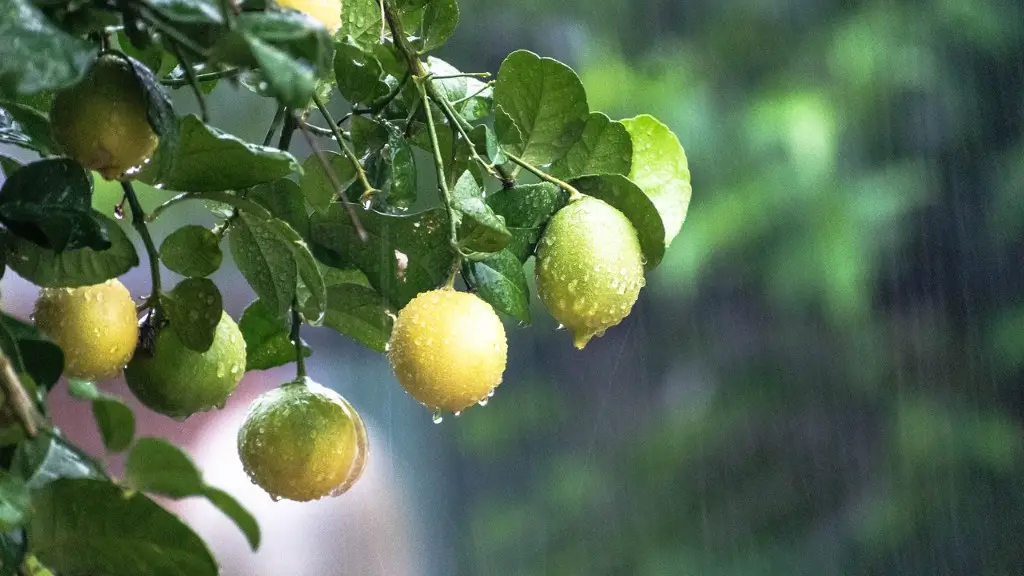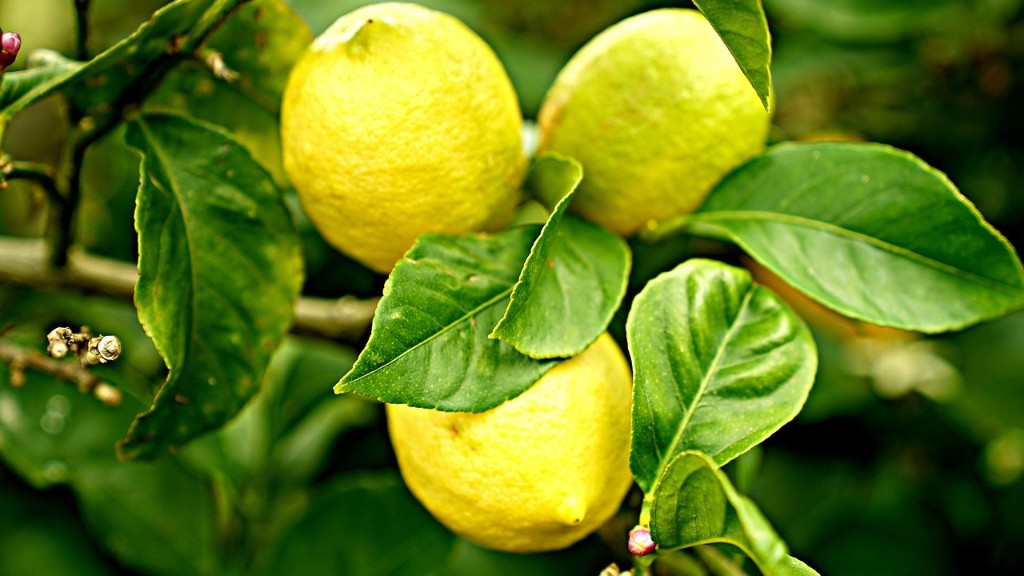Meyer lemon trees are some of the most popular plants among agricultural enthusiasts and home gardeners alike. However, growing a Meyer lemon tree is far from an overnight process, and one should be aware of the separate growth stages that a tree must go through before it’s mature enough to bear fruit. Before considering how long it takes for a Meyer lemon tree to reach its full potential, one should understand the proper way to tend to a tree, the proper rotation cycle of each stage, and the range of conditions necessary for healthy growth.
To ensure optimum health in a Meyer lemon tree, the gardener should choose a sunny location that receives at least eight hours of direct sunlight every day. The soil should be well-draining and acidic, with a pH balance of 6.5 to 7.5. Watering the tree should be done when the soil surrounding its roots appears dry; soil should not be left damp, as this can cause root rot. During the winter, the tree may require less water, as frigid temperatures can cause dehydration in the tree.
When a Meyer lemon tree is first planted in its permanent location, it will be considered a sapling. This is the first stage of growth, and can be expected to last between two and four years. During this time, the tree will grow a strong root base, tighten its foliage, and produce blossoms that may or may not yield fruit during the first two to three years. It’s recommended that the gardener regularly prune the foliage and generally care for the sapling in order to ensure it’s healthy before moving onto the next stage.
Once a Meyer lemon tree is firmly established as a sapling, it will then enter the maturing phase. During the maturing phase, it can be expected to reach heights of 6-10 feet and produce a greater abundance of blossoms. It will also yield fruit during this time, and could potentially reach its optimal productivity in as little as two to three years. After five to seven years, the tree should be considered a fully-grown adult.
In summary, planting and successfully growing a healthy Meyer lemon tree can be a long and involved process. While the exact time depends largely on the individual tree, with proper care and the right conditions it can expect to move from sapling to adult in five to seven years. It is this investment of time and energy that makes the eventual harvests so rewarding.
Environmental Factors
The environmental conditions in which a Meyer lemon tree is kept can make a significant difference in its overall health, potential to produce fruit, and rate of growth. Soil, air temperature, and watering can all affect the growth and health of a Meyer lemon tree, an any combination of unfavorable conditions can decrease the rate at which a tree grows and blossoms.
For example, soils with a pH below 6.5 can be detrimental to a Meyer lemon tree, as the acidic environment can stunt root growth and cause a decrease in total foliage. Furthermore, drafts during the winter can weaken a lemon tree if it isn’t properly insulated, and if temperatures plummet too low the blooms may not be able to yield fruit. Lastly, the tree should be monitored regularly to make sure the soil isn’t too wet or too dry.
Overall, each potential environmental factor that a Meyer lemon tree may encounter must be carefully managed to ensure a healthy, productive tree. Should any component or combination of components be unfavorable, it can lead to a slower growth rate and a decrease in total productivity.
Trees As Gifts
Given the lengthy growth cycle of a Meyer lemon tree, it’s wise to think ahead when considering gifting one. As planting a tree from the ground up is a lengthy process, many anxious gardeners may opt for buying a tree that’s been grown in a nursery. Many retailers offer Meyer lemon trees for purchase and can provide recommendations for proper care.
While buying a Meyer lemon tree from a nursery can be a viable option in many cases, it’s important to remember that the gardener may need to wait up to seven years for the tree to reach maturity, and it may need to be re-potted and acclimatized to its environment in the meantime. Therefore, gifting a Meyer lemon tree should generally be done with an understanding of the necessary long-term maintenance.
Maintenance Requirements
Caring for a Meyer lemon tree can be a lengthy process, and in order to remain healthy it may require somewhat frequent visits from an experienced gardener. During the tree’s sapling stage, it may need to be pruned a few times each season, and dead leaves and branches should be removed to maximize nutrient access. As the tree matures and begins to yield fruit, picking it regularly and correct any dead foliage can help it remain healthy and productive.
In addition, the soil should be tested once a year to make sure it’s not overly acidic, and any diseased foliage should be removed with hopes of restricting the spread of fungus and bacteria. Lastly, it’s important to remember to fertilize a Meyer lemon tree at least once a year, and to monitor the water cycle during all stages to prevent over- or under-watering. In other words, Meyer lemon trees require frequent attention and one should be willing to regularly perform maintenance in order for the tree to remain healthy.
Pets and Wildlife
When considering a Meyer lemon tree, one should also be aware of any pests that may seek to ruin its fruit and foliage. Common pests of Meyer lemon trees such as spider mites, whiteflies, and aphids may prove difficult to tackle without the help of a pest control specialist, and even the most experienced home gardener may find it difficult to properly maintain their tree when these pests have taken hold of the fruit and foliage.
As for animals, many of them may attempt to nibble on a Meyer lemon tree’s fruit or leaves. Either intentional or unintentional damage done by wildlife can stunt the health of a tree, and while it’s often difficult to completely discourage them from damaging the tree, erecting a fence around the tree may prove helpful in a pinch.
Fruit Production
As mentioned before, a Meyer lemon tree should be able to yield fruit during its maturing phase. However, the specific amount of fruit the tree will produce and the duration of each fruit-bearing season may be affected by environmental conditions, pest infestations, and overall care. Softer areas such as the underside of each leaf may be more prone to pest damage, and insecticides or fungicides may have to be applied to prevent further damage.
Furthermore, when fruit is ready for harvesting, it’s important to know when to pick each piece of fruit in order to maximize its nutritional content. Some lemon varieties can be picked earlier for a tart flavor, while others are sweeter when fully ripe. The gardener should also be aware of any nearby animals that may attempt to dabble in the fruit, including crows and lizards.
In conclusion, it’s necessary to properly care for and monitor a Meyer lemon tree if one hopes to maximize its productivity. Being aware of the environmental conditions, necessary maintenance, and potential pests are all integral aspects of a successful harvest, as any combination of adverse conditions can affect the development and total productivity of a Meyer lemon tree.


